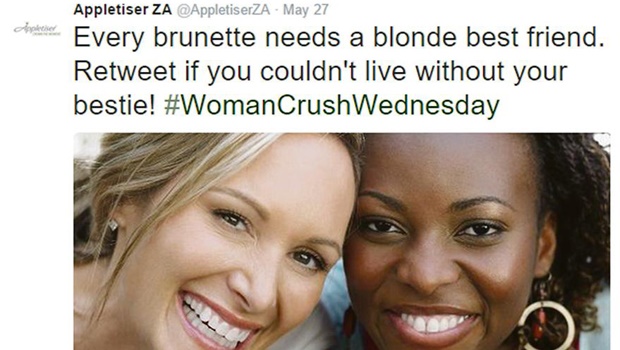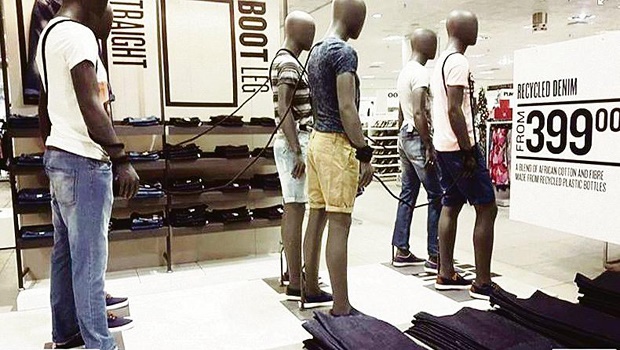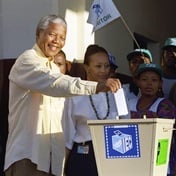It takes seven seconds to build a prejudice based on someone’s appearance. This past Ramadan, Coke Middle East invited six strangers to break their fast in the dark, and recorded it.
Each person took turns introducing themselves. One said “I play heavy metal”, and the others assumed he had a ponytail and a body piercing. When the lights were turned on, he was a strait-laced, bespectacled man. This cleverly proved that assumption-based labels are often false. It also made me think: “I wish I’d done that – a great advert that understands culture and builds more than it sells.”
Why did that thought cross my mind? Because I live in a diverse South Africa, and have seen and heard ads written for blacks by whites and some written for whites, most often by whites (a function of how the industry is populated – a sore point, but one that requires a column of its own). Back in the day, some electronic ads were even labelled black English – they were to be aired on radio stations that broadcast in English, but targeted black people.
For these, they used black voices speaking English without a twang. Trust me, this was Mzansi for you.
I’m reminded of an ad campaign for Palmolive bath soap. The “white” ad featured a pretty woman taking a bath and singing the crooner Wilson Pickett’s In The Midnight Hour.
The boyfriend/husband is attracted to her singing and stealthily proceeds to the bath to savour the moment, I guess, hopefully to a happy ending.
Enter the “black” version.
There’s another pretty woman. Black, of course, singing the same song. And who is drawn to the sound of the singing and proceeds into the bathroom? The woman’s bubbly little son. Why the difference, we asked at the time. Because black people aren’t as explicit as their white counterparts on the subject of sex. They are much more reserved, said the PR machine.
Wow, I am sure they had research to back this up. Thembi, the hired help, to be exact.
I wish I was writing to tell you that we’ve turned the tide, but we seem to have slipped further down this slippery slope.
Several examples stand out this year – and while the advertisers I don’t mention will breathe a sigh of relief, the ones I name aren’t intended as part of a shaming exercise, but to show the frequency of these “racial and racist” misfirings.
First, there’s Appletiser. As part of #WomanCrushWednesday, it tweeted an ad that showed a black woman and a white woman with the headline: Every brunette needs a blonde best friend.
Some saw it as disrespectful to the black woman by whitewashing her. Others felt it implied that a black person needed a white best friend to be “worthy” of Appletiser. When confronted by this, Appletiser claimed ignorance.
Then came H&M, which hasn’t made the best first impression. There were no black models in its launch ads. When asked, the response was: “H&M’s marketing has a major impact and it is essential for us to convey a positive image.” Really? So by inference, the inclusion of black models would convey a negative message? As the young ones say: “One clap and weave to the left.”
Not to be outdone – Woolworths has its slaves and Christmas-bauble mannequins. Displays are meant to be creative, attractive and drive customers towards buying the product. This one offended after someone must have okayed it. Someone viewed the display, tilted their head to one side and licked their lips in admiration of their work of art. Right?
How on earth did they miss the obvious abomination that was staring them in the face?
Black men tied to ropes, in some sort of Django file, immediately bring to mind sad memories of slavery. The bigger error was the response from Woolworths. This is a big brand faced with a huge issue that requires a bigger response. Hiding behind a vacuous, one-liner makes one wonder if it really cared about the silent message it was sending out.
I think Woolies might have missed an opportunity to redeem itself. Someone might have to lick his or her wounds this time around.
I would like to suggest these six tips for brands in “black trouble”:
. Head straight for mea culpa. Do not pass the buck to a minion in your business.
. This mea culpa must emanate from the highest office in the organisation – that is true leadership. It is a leadership that represents the values of the brand.
. If a culture is foreign to you, learn from those who live it or insource the expertise.
. Fall and learn. A mistake repeated is called a habit.
. Embrace transformation. It’s the secret sauce to sustained future growth.
. Grab every opportunity to learn new respect for the black consumer, unlearn your prejudice and disrobe yourself of your superiority complex.
Marutlulle is CEO and founder of Moonchild, a brand consultancy firm
Do you think retailers are out of touch with the local market? If yes, why?
SMS your thoughts to 35697 using the keyword ADVERT. Each SMS costs R1.50. Please include your name




 Publications
Publications
 Partners
Partners











